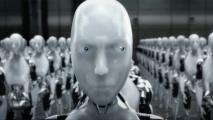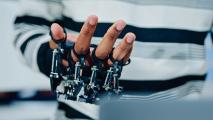In 2021, retired actor Bruce Willis gave video production firm DeepCake permission to use deepfake tech to insert his likeness into a series of advertisements — and the AI they trained for the project could allow him to keep entertaining fans well into the future.
Authorized deepfake: In March 2022, Willis’ family announced that he would be stepping away from acting due to a recent diagnosis of aphasia, a language disorder that was impairing his cognitive abilities.
One of the action star’s last projects was a series of ads for Russian telecom company MegaFon, but it turned out he didn’t really act in the commercials — the ads were deepfakes that used AI to insert Willis digitally into the videos.
To create them, DeepCake first trained an AI on Willis’ likeness using 34,000 images from when he was in his 30s and early 40s. After that 14-day process, the AI was able to superimpose Willis’ face on the body of Konstantin Solovyov, the body double who sat in for Willis in the ads.
“Our general mission is to help celebrities monetize their digital copies while being fully in control of their use and managing the rights.”
Maria Chmir
Willis was paid an estimated $1-2 million for agreeing to have his “digital twin” appear in the ad series and seemed pleased with how the project turned out.
“With the advent of modern technology, even when I was on another continent, I was able to communicate, work, and participate in the filming,” he said at the time. “It’s a very new and interesting experience, and I thank our entire team.”
DeepCake’s engineers would reportedly need just “three to five days” to recreate Willis for any future projects approved by the actor’s estate.
“We create a digital asset for celebrities directly or for specific collaborations with their agents,” DeepCake CEO Maria Chmir said in a press release. “Our general mission is to help celebrities monetize their digital copies while being fully in control of their use and managing the rights.”
The big picture: Deepfake technology has a bad rap for good reason — the tech can be used to spread disinformation, and most of the deepfakes online are pornographic and exploit non-consenting women.
Willis’ willing participation in the MegaFon ads demonstrates the positive potential of the tech, though — even though he can no longer act, he can still earn a living from his likeness, while companies that might not have been able to afford the “real” Willis can hire him for their projects.
He’s not the only performer seeing the benefit of having an AI-generated digital twin, either.
Aging actor James Earl Jones recently gave AI company Respeecher the greenlight to train an AI to replicate his voice — future installments of the Star Wars franchise will now be able to use deepfaked audio to have the actor’s iconic voice continue the role of Darth Vader.
DeepCake says it’s ready to recreate “virtually any celebrity.”
In the future, we could see working actors create digital copies to star in projects they might not have the time to act in themselves, but wouldn’t mind cashing in on, like ads for Russian telecoms.
Some oppose this practice, arguing that the deepfaked celebs will be taking jobs away from other actors, including ones trying to break into the industry. The situation gets even more controversial when we consider the estates of deceased actors using deepfake tech to lend their likenesses to new projects.
Still, DeepCake says it’s ready to recreate “virtually any celebrity,” so Willis might be the first big Hollywood star to have his own digital twin created, but he likely won’t be the last.
We’d love to hear from you! If you have a comment about this article or if you have a tip for a future Freethink story, please email us at [email protected].






